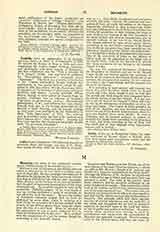

Macarius, the name of two celebrated contemporary Nitrian monks of the fourth century: MACARIUS THE ALEXANDRIAN, also called Greek: o politikos either in reference to his city birth or polished manners; d. about 405. He was a younger contemporary of Macarius the Egyptian, but there is no reason for confounding or identifying him with his older namesake. More than any of the hermits of the time he exemplified the spirit of emulation characteristic of this stage of monasticism. He would be excelled by none in his austerities. Palladius asserts “if he ever heard of any one having performed a work of asceticism, he was all on fire to do the same”. Because the monks of Tabennisi eschewed cooked food in Lent he abstained for seven years. Once, in expiation of a fault, he lay for six months in a morass, exposed to the attacks of the African gnats, whose sting can pierce even the hide of a wild boar. When he returned to his companions he was so much disfigured that he could be recognized only by his voice. He is credited with the composition of a rule for monks, though his authorship is now generally denied.
MACARIUS THE EGYPTIAN or THE ELDER, one of the most famous of the early Christian solitaries, b. about A.D. 300; d. 390. He was a disciple of St. Anthony and founder of a monastic community in the Scetic desert. Through the influence of St. Anthony he abandoned the world at the age of thirty, and ten years later was ordained a priest. The fame of his sanctity drew many followers, and his monastic settlement at his death numbered thousands. This community, which took up its residence in the Nitrian and Scetic deserts, was of the semi-eremitical type. The monks were not bound by any fixed rule; their cells were close together, and they met for Divine worship only on Saturdays or Sundays. The principle which held them together was one of mutual helpfulness, and the authority of the elders was recognized not as that of monastic superiors in the strict sense of the word but rather as that of guides and models of perfection. In a community whose members were striving to excel in mortification and renunciation the preeminence of Macarius was generally recognized. Several monasteries in the Libyan desert still bear the name of Macarius. Fifty homilies have been preserved which bear his name, but these and an “Epistle to the monks”, with other dubious pieces, cannot be ascribed to him with absolute certainty.
PATRICK J. HEALY

